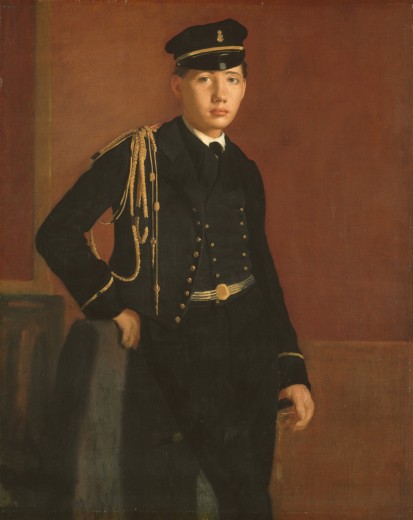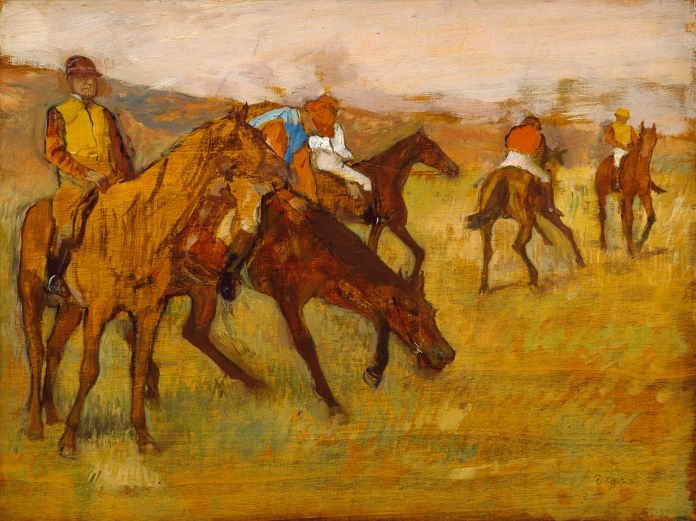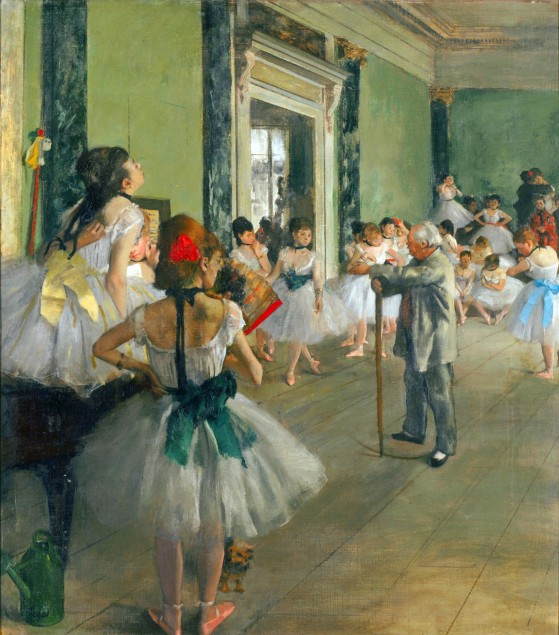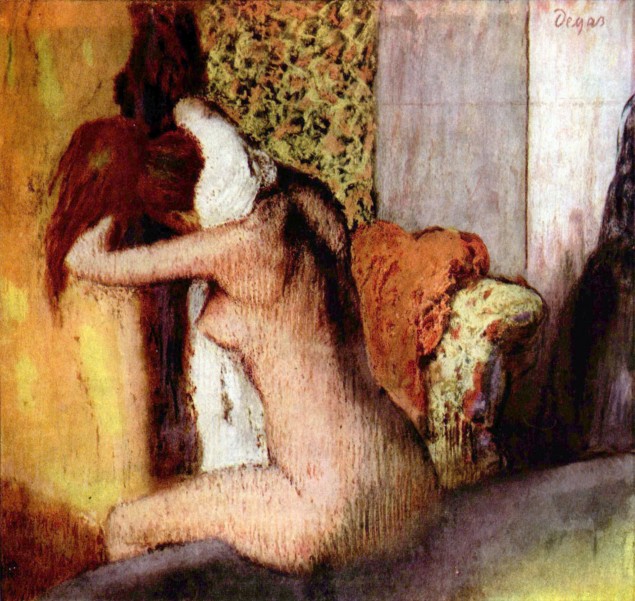Opening quotation courtesy of Wikipedia.
Ballet dancers feature extensively by Degas. Having seen Degas’ work for myself I can irrefutably attest to his awe-inspiring magnificence. Please let me be clear, I’m talking about breathtaking quality.
The kind of art works that cause me to wonder-at.. much like a child seeing their first puppy.
‘Rover’ a Manchester Terrier popped his adorable puppy head out from our Dad’s coat jacket. I was about nine years old. If you had known our first family dog you would have to say his name was perfectly accurate. Pretty much everyone within our neighbourhood knew him. Even the butcher ten minutes walk away at the local shops! Rover had been known to sit outside looking through the window, waiting.
A nearby family watched him enter their open-gated garden, take their large sheepdogs juicy bone from under its nose and leave like the SAS as if nothing had ever happened. We only knew because they told us – astounded at his sheer audacity! Rover once got locked in a neighbours garage, barking for a couple of hours to be let out. They thought it was a neighbours dog, well it was, ours one road and cul-de-sac away.
As children we’d play with our friends and so the opportunity eventually arose for him to craftily sneak off to do ‘Rover’ business. One of the funniest things was seeing him regularly ‘jogging’ in front of us, tongue-out looking back at us. Wouldn’t mind except that we were at full speed on our pedal bikes!
Rover – “an animal which ranges over a wide area.”
Degas had a keen interest in gracefulness and the beauty of depicting honesty in his paintings.
‘The Ballet Class’ shown above has an excellent sense of perspective, order and formal instruction as its theme. The dancers waist bows are multi-coloured with intentional shine or matte finish. Floorboards and walls would be painted first ready for his complex ensemble of dancers in their individual postures.
Foreground-left, a girl is uncomfortable and fidgety. Adding to the sense of flexibility and concentration required for intricate ballet moves. Degas paints intellectual ideas. Is this the young girl that attends classes for a few weeks then decides it’s not for her?
Her mother might say – ‘You loved ballet and we brought you all these lovely clothes boutique et al.’
Their ballet teacher is rigid and strictly characterised in polar contrast to the dancers. We need to ask – was this momentarily observed by Degas or a structured composition by design?
Likely both.
In 2004 I saw an impossible sight of human perception. I spoke of this phenomenon to a rare few and made especially careful note. In 2004 I stood by a paint artist working ‘plein air’ in Rhodes not far from the port itself. Hidden deep was he, peaceful amongst an ‘orchard’ of trees and deep red flowers. Likely the red hibiscus.
Speaking with the artist whilst he contrived artily of that gorgeous flower, painting also precisely of certain delicate observations. His brush movements definitive and skilled.
Whosoever can paint as definitely as Edgar Degas deserves to be earnestly proud. A Realist of his period and highly capable of masterful Impressionist work.

‘Achille De Gas’ in the Uniform of a Cadet (1856/1857) by Edgar Degas, Oil on canvas, 64.5 cm x 46.2 cm (25 3/8 in x 18 3/16 in)
Achille Degas is his brother. Posing here relaxed, casual and at ease in his Cadet uniform.
Photographs of paintings allow us glimpses. Please trust me when I say that having seen ‘The Beggar Woman’ by Edgar Degas for myself that his work defies belief. Paint has its own texture within oils. The substance real and magical of properties through the cunning art of visual illusion.

‘Before The Race’ (1882-1884) by Edgar Degas, Oil on panel, (H) 26.4 cm (10.4 in). 34.9 cm (13.7 in)
Degas produced numerous compositions of horses and their riders. I chose to include an Impressionist oil painting for this article. The bowing horse is particularly alive to me. Living. Breathing.
That the painting is some 132 years old does not prevent me from wanting to know what on earth he is thinking bucking like this with his rider. The far-left horse could be viewing the finish line already! Or perhaps waiting for a gentle squeeze of knees and heels for the cantering.
The chromatic symmetry is a work of art all of its own. Burnt umbers, oranges and yellows. It allows for variety as an artist. Sometimes its good to exclaim ‘What does my sky matter when the foreground subjects become our EVERYTHING.’
Diversity is depth of feelings.
The most exciting thing about nude painting?
Naked trust. Every single time.


